One application of the membrane chips is the generation of plasma/serum from whole blood. While this application is rather prominent, these chips can be used for various filtering applications by exchanging the membrane material and using various pore sizes. A range of different membranes is available at microfluidic ChipShop and can be integrated on request.
Plasma Generation Chips
Microscopy slide chips with 2 and 4 membranes are at hand to ensure the plasma/serum generation out of full blood. For the chips with 10 mm diameter membranes, each membrane can generate roughly 12 – 15 μl plasma/serum out of 25 μl full blood. Each unit of these chips consists of a Luer interface (1) for blood loading, a support channel with a cross-section of 300 μm × 100 μm (2) for the transfer of the blood on top of a separation membrane (3) that is fused into a chip-based chamber of 10 mm diameter, a plasma/serum collection channel (4) below the membrane, and a ventilation channel of 100 μm × 100 μm (5) also below the membrane. The vacuum is applied via the collection channel and a second interface (6) to the outer world. A third interface (7), which is closed during the sample loading, helps to smoothly release the slight vacuum if the membrane pores are blocked by the solid components of the blood such as erythrocytes, monocytes, platelets, or leucocytes. The chips are offered without (membrane chip 168) and with an additional venting line (membrane chip 200) to allow for an easier filling of the membrane chamber itself. Upon request, the platform can be equipped with customer-specific membranes. Please contact us for feasibility and pricing.
10 mm Diameter Membrane
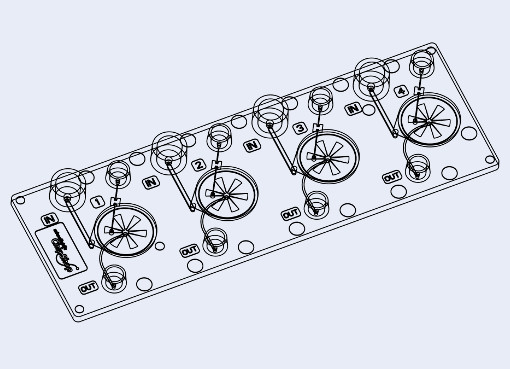
Schematic Drawing of Fluidic 168
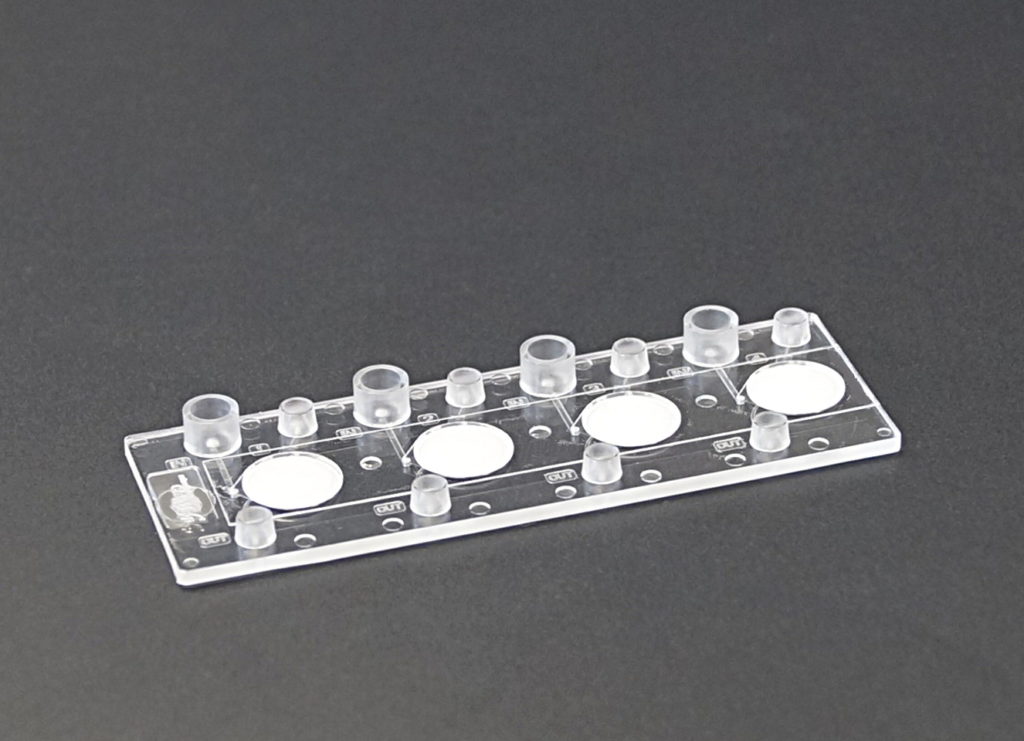
Fluidic 168
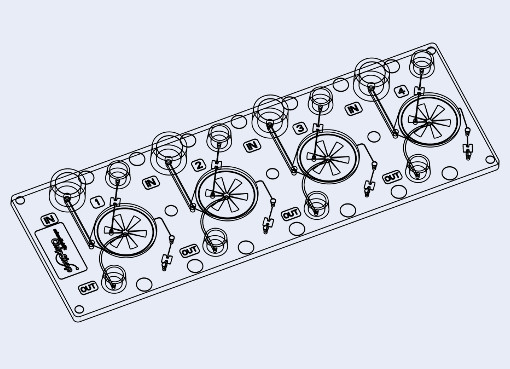
Schematic Drawing of Fluidic 200
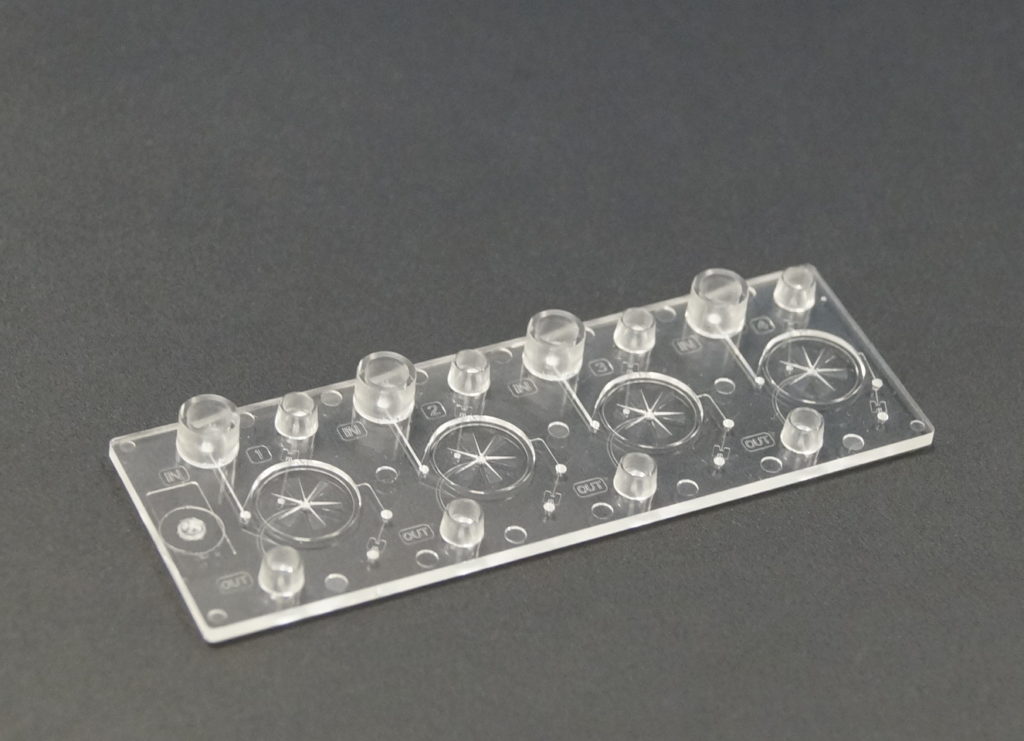
Fluidic 200
![]()
High Capacity Membrane Chips
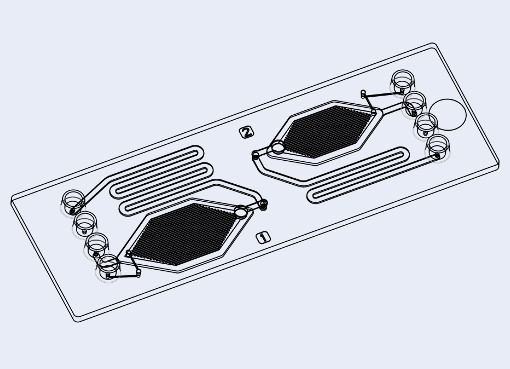
Schematic Drawing of Fluidic 535
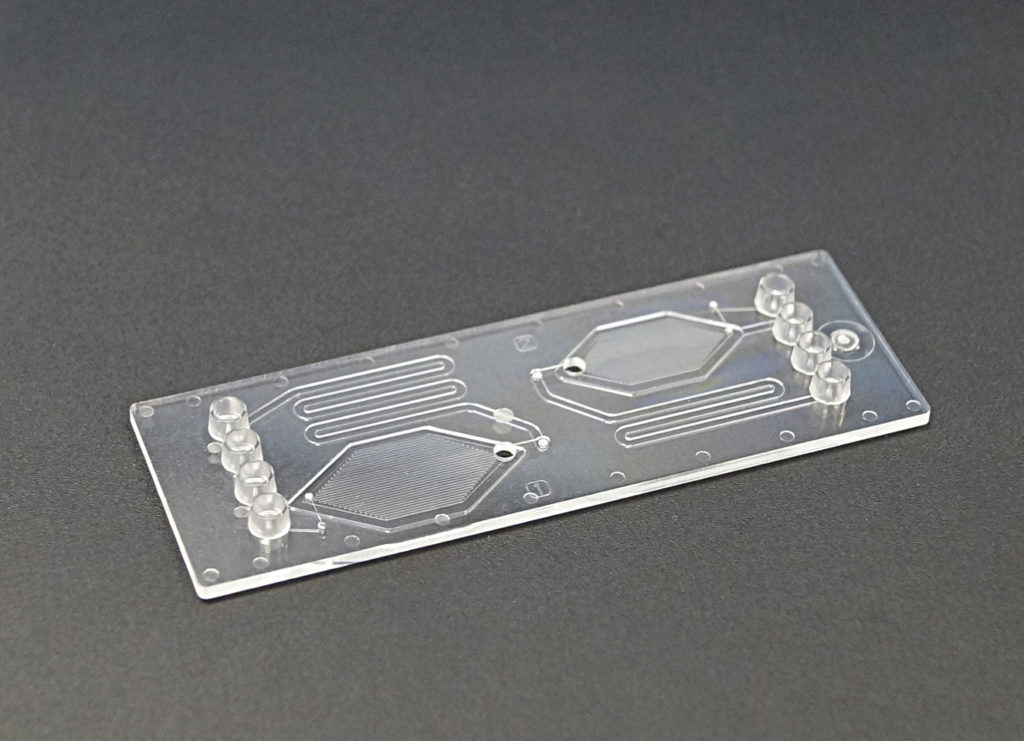
Fluidic 535
![]()
Two-Membrane Chips
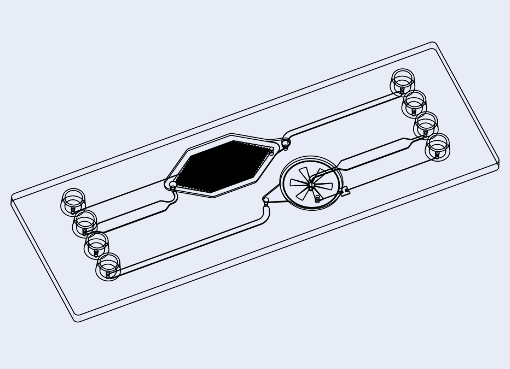
Schematic Drawing of Fluidic 783
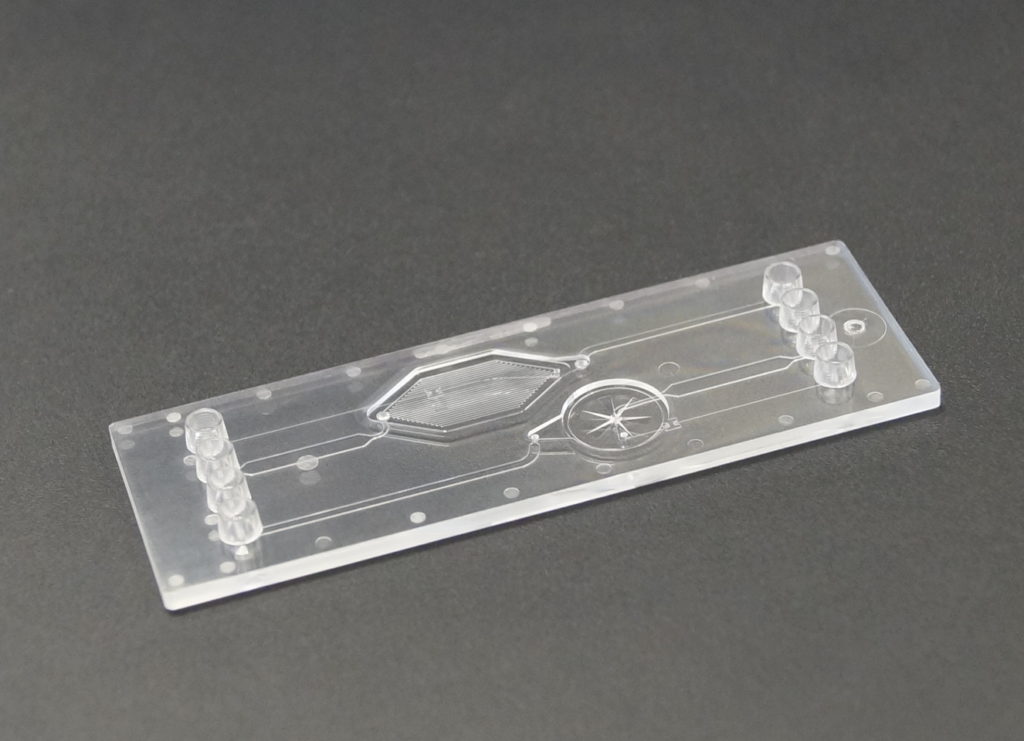
Fluidic 783
![]()
Transwell Membrane Chips
The transwell chips have been designed to allow direct access on membrane areas and provide a permanent entry port for liquid supply, storage and exchange. In combination with microfluidic ChipShop’s specially designed Interaction Tanks like Fluidic 234 and 235 for liquid supply and storage this chip family allows for a wide variety of filtering and assay tasks in particular for cell-based assays. Interaction Tank Fluidic 235 is equipped with a cap that included Mini Luer fluidic interfaces to be easily connected to pumps for permanent operation.
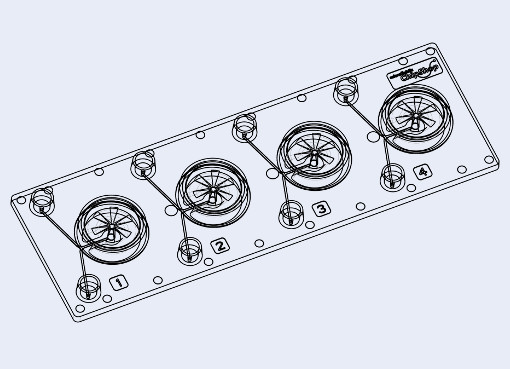
Schematic Drawing of Fluidic 219
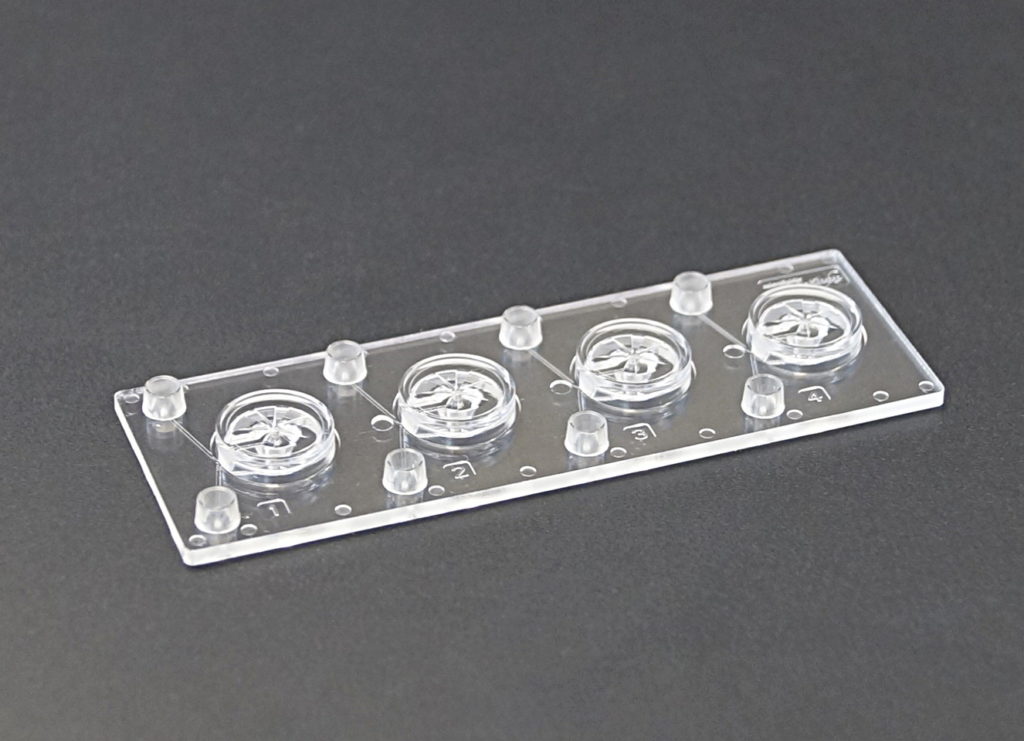
Fluidic 219
![]()
Cross Flow Membrane Chips
The cross-flow membrane chips have two in- and outlet ports above and below the membrane. This allows for experiments such as small molecule transfer measurements, on-chip dialysis or cell culture experiments. Upon request, the platform can be equipped with customer-specific membranes. Please contact us for feasibility and pricing.
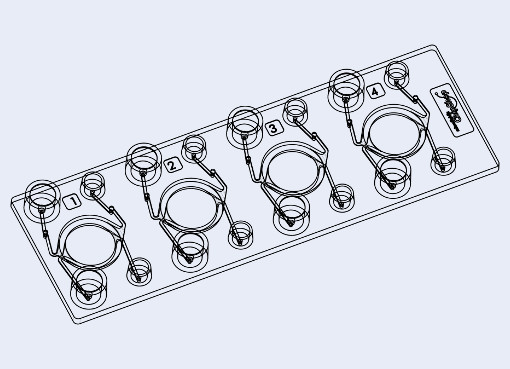
Schematic Drawing of Fluidic 398
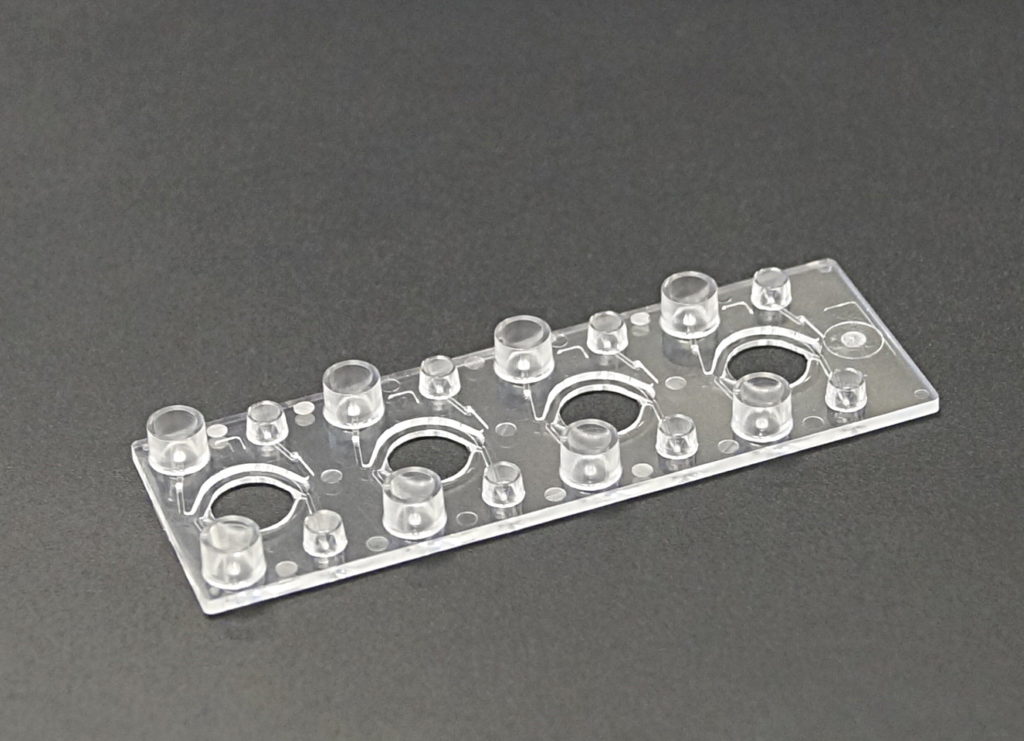
Fluidic 398
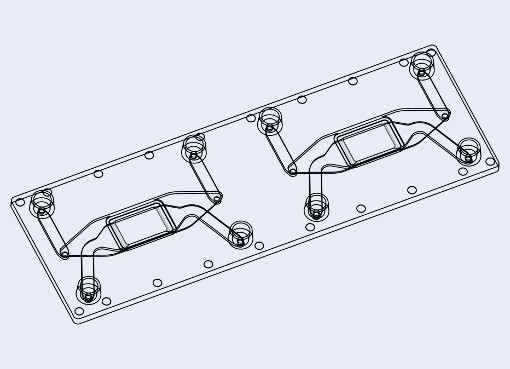
Schematic Drawing of Fluidic 480
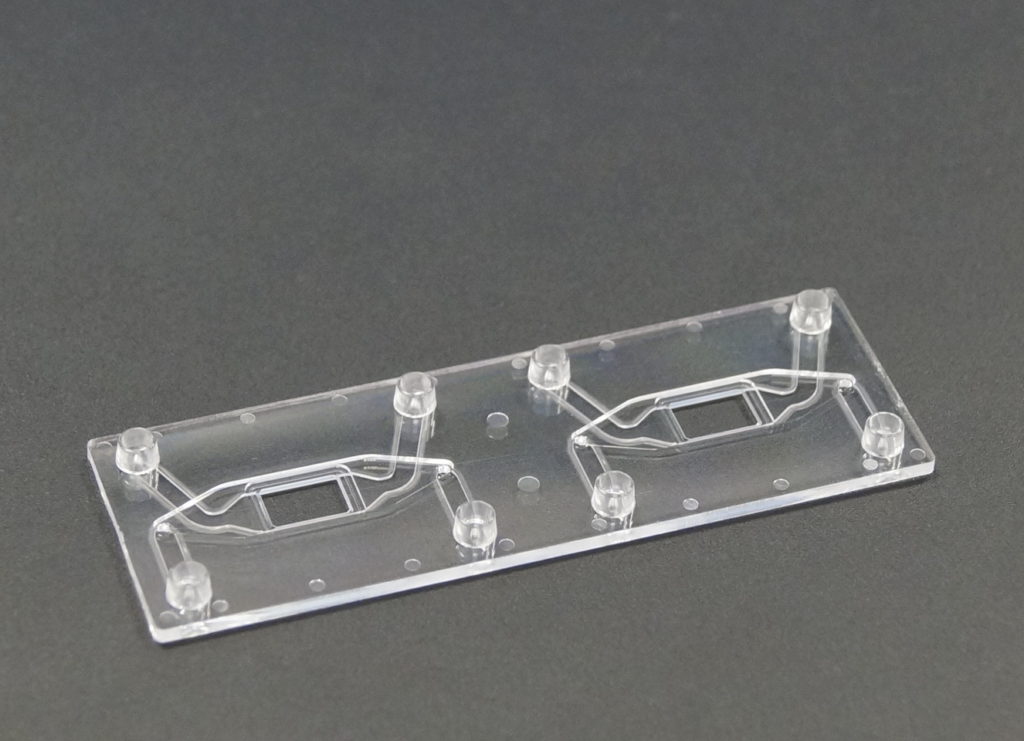
Fluidic 480
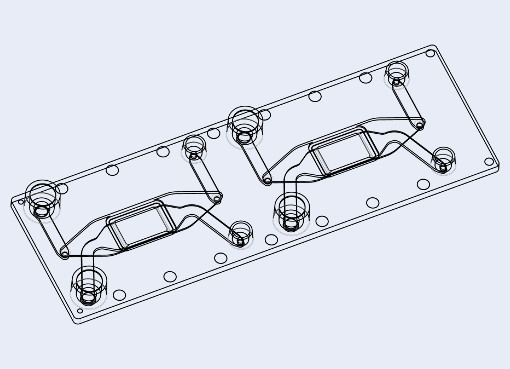
Schematic Drawing of Fluidic 568
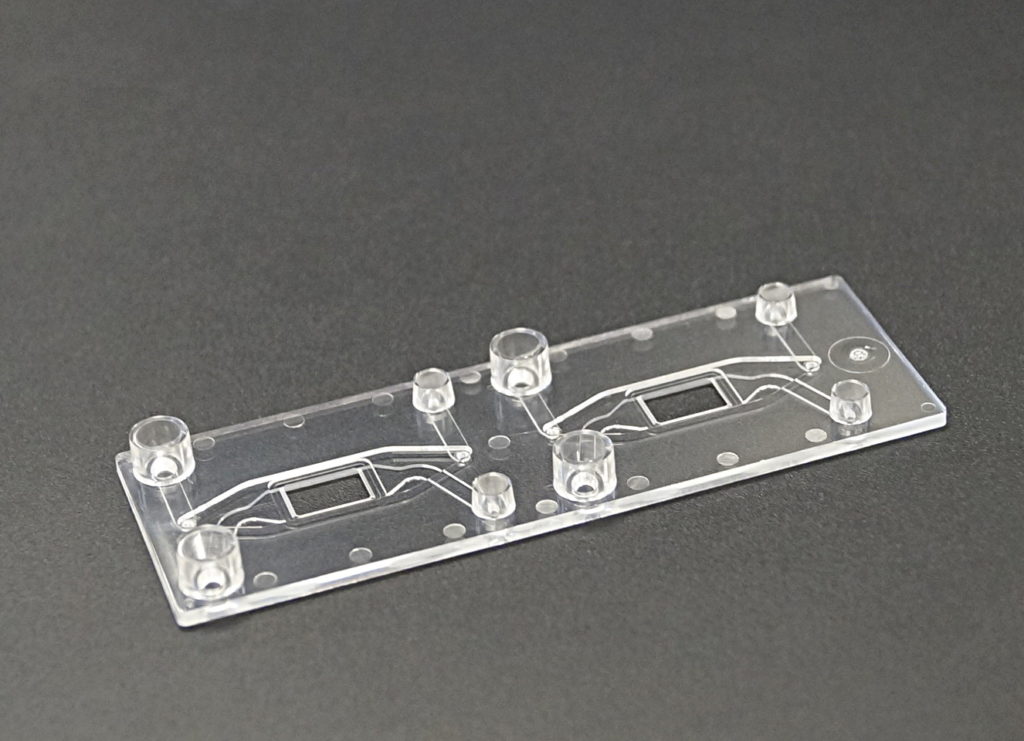
Fluidic 568
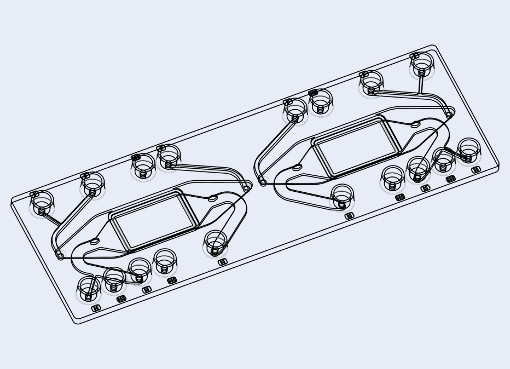
Schematic Drawing of Fluidic 653
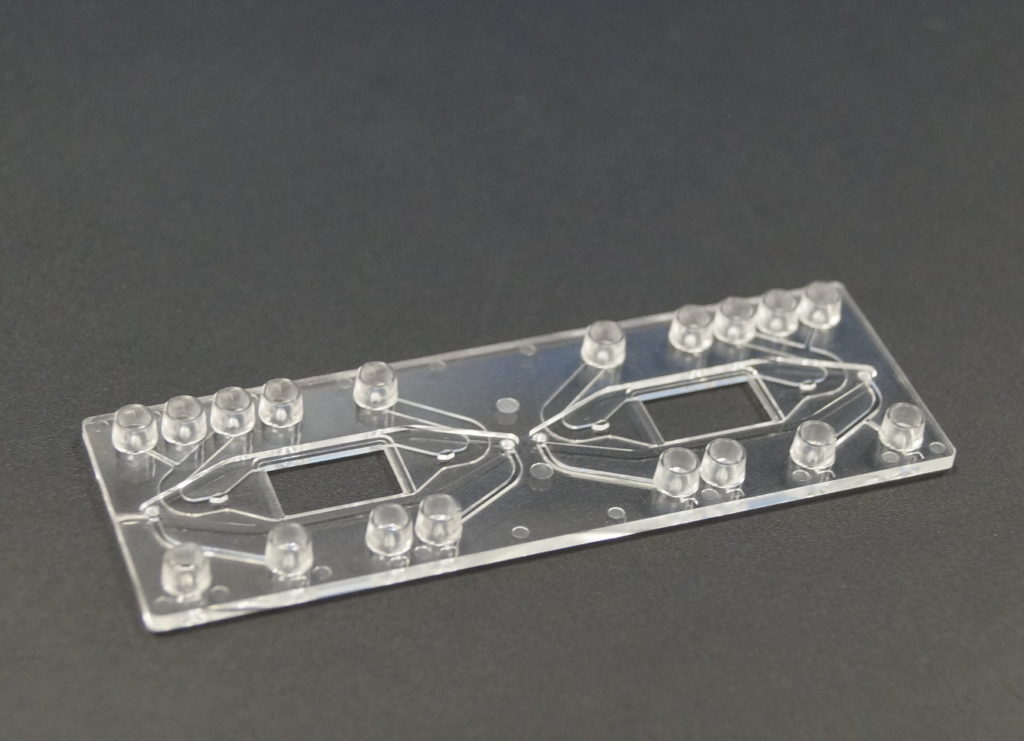
Fluidic 653
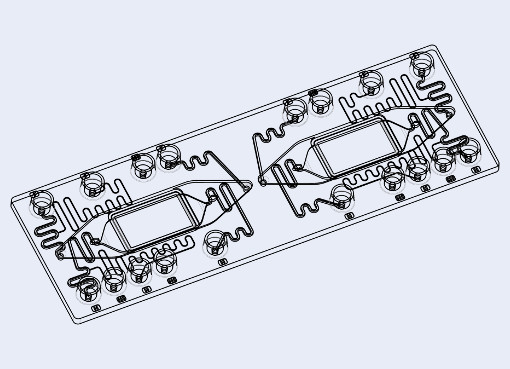
Schematic Drawing of Fluidic 694
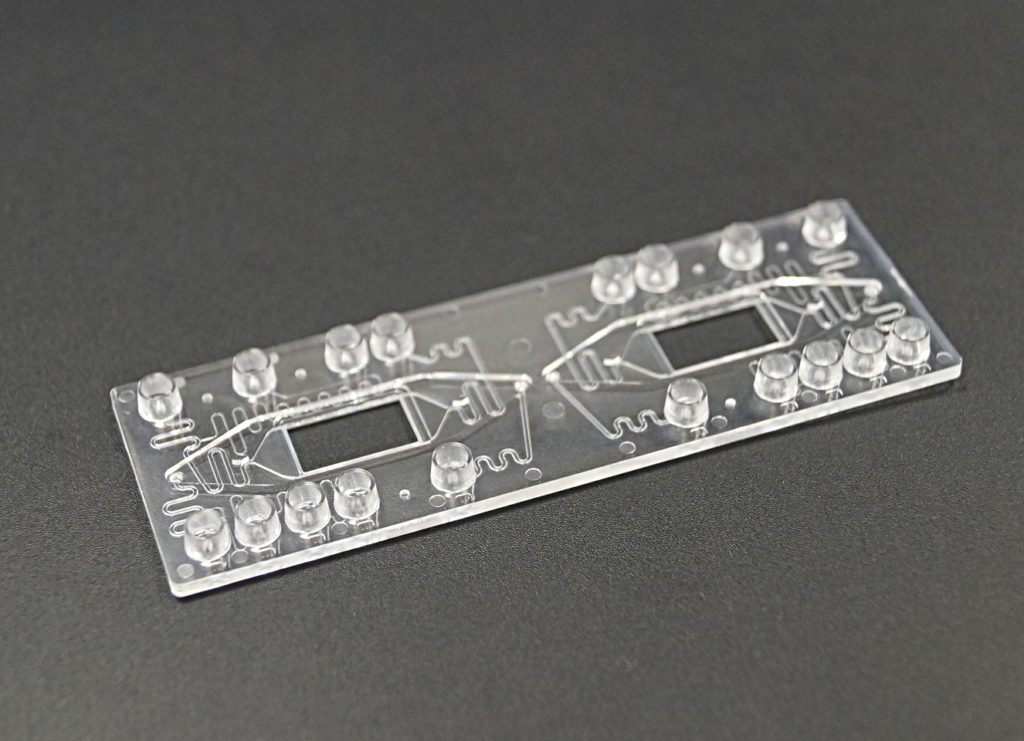
Fluidic 694
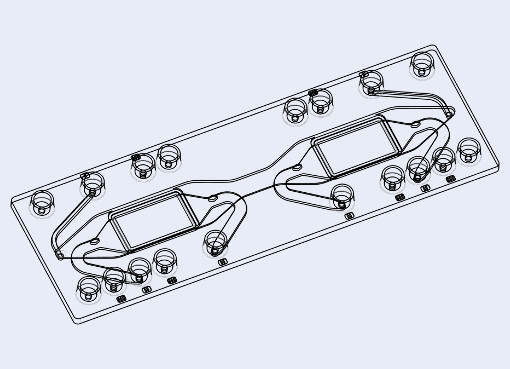
Schematic Drawing of Fluidic 747
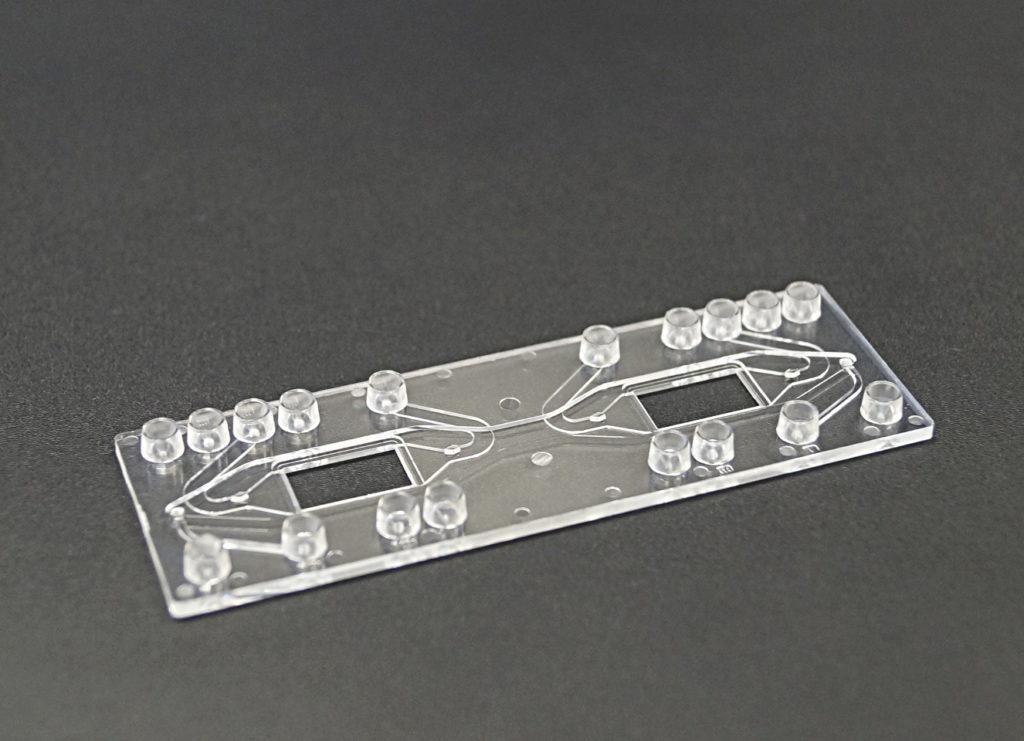
Fluidic 747
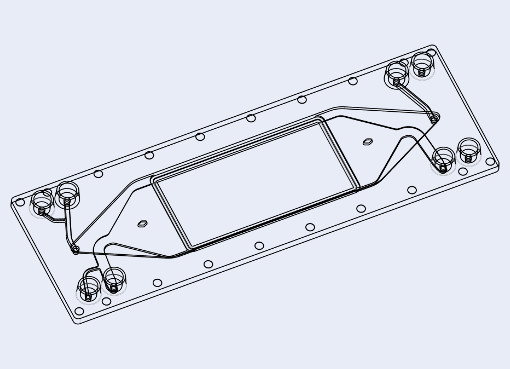
Schematic Drawing of Fluidic 846
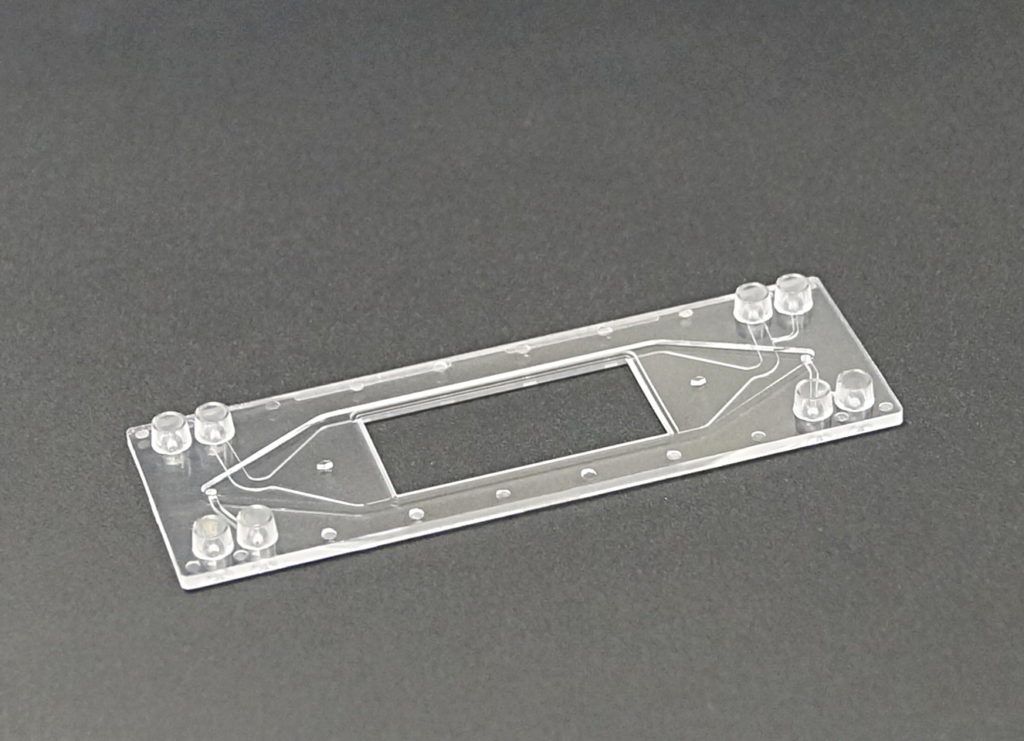
Fluidic 846
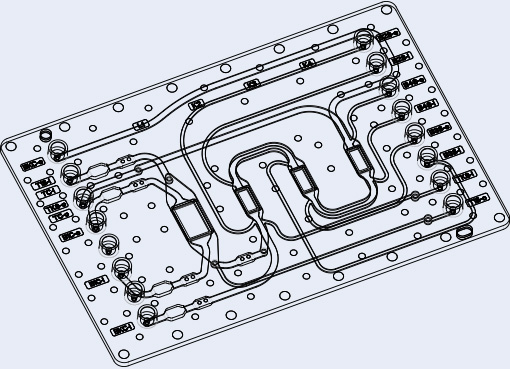
Schematic drawing of Fluidic 923
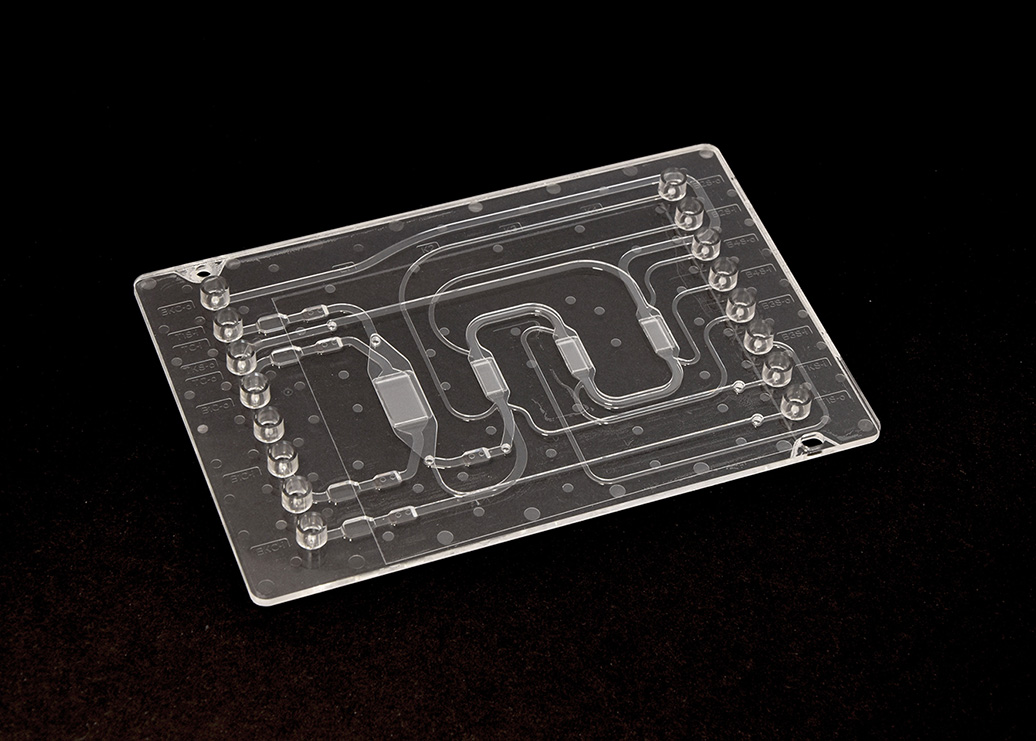
Fluidic 923
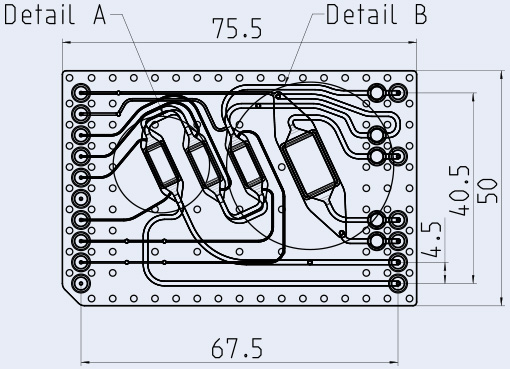
Schematic drawing of Fluidic 1356
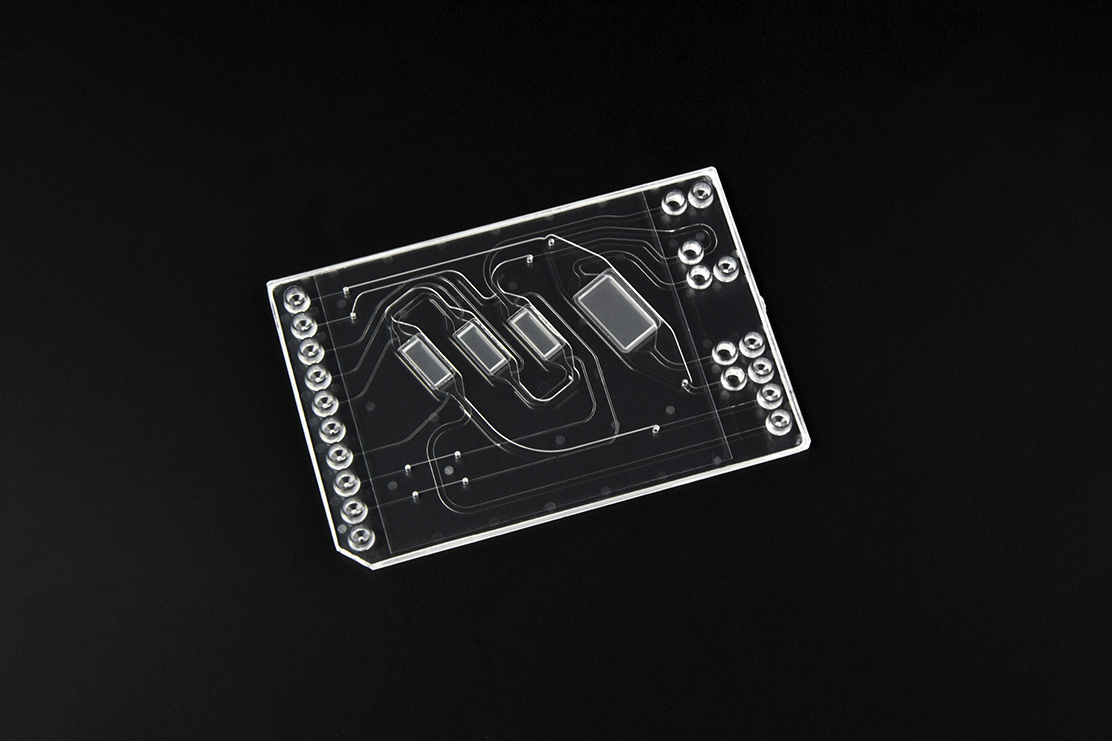
Fluidic 1356
Cell trap chip
In our cell trap chips, the wells have been designed to trap individual cells and enable monitoring and imaging at a single cell level.
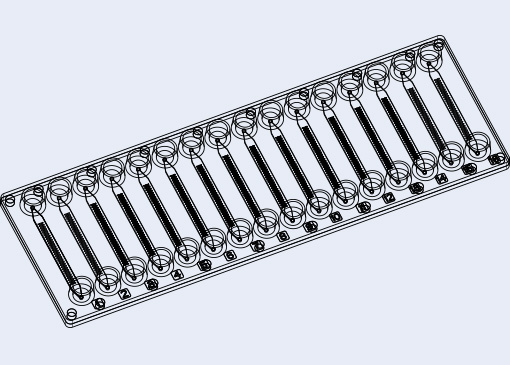
Schematic drawing of Fluidic 1022
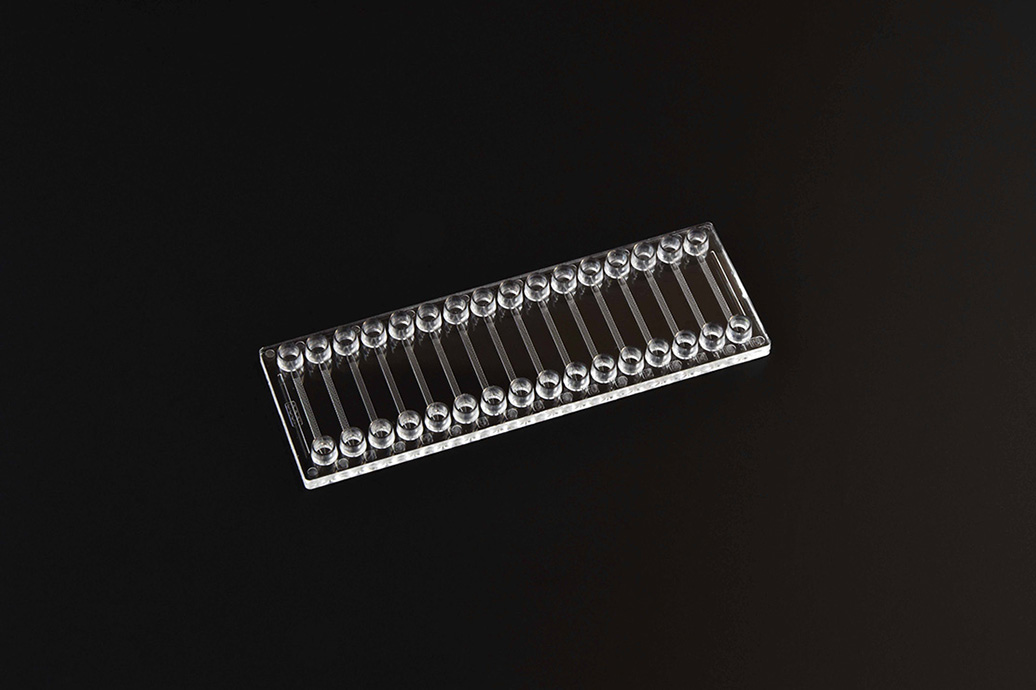
Fluidic 1022
3D culture integration chip
Scaffold-based 3D culture integration in microfluidic chips provides a versatile platform for creating physiologically relevant in vitro models of tissues and organs. This technology allows to closely mimic the natural microenvironment of cells, enabling better insights into tissue biology, disease mechanisms, and drug responses.
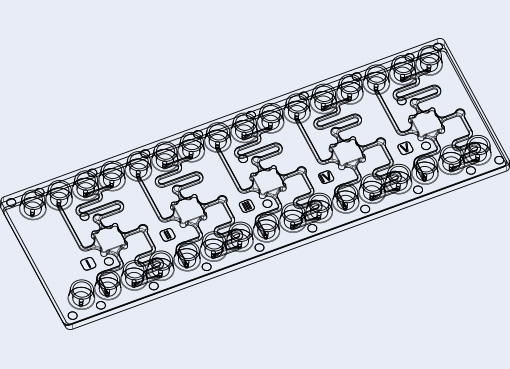
Schematic drawing of Fluidic 1380
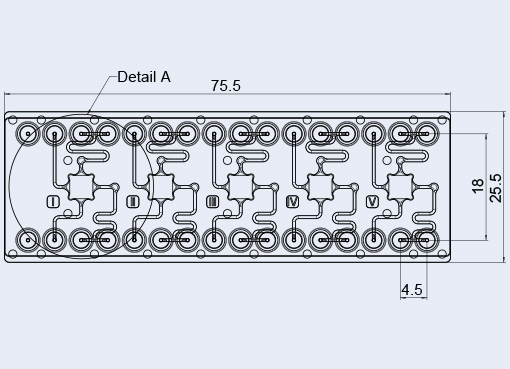
Dimensions of Fluidic 1380
Suspension cell culture chip
microfluidic ChipShop’s suspension cell culture chips are ideal for long-term cell cultivation and perfusion of non-adherent cell types. The microfluidic chips have microscopy slide formate and come with a matching handling frame, that combines easy accessibility for fluid handling e.g. medium exchange, as well as routined read-out. The cultuivation chambers feature excellent optical quality for high-resolution microscopy with every inverted microscope.
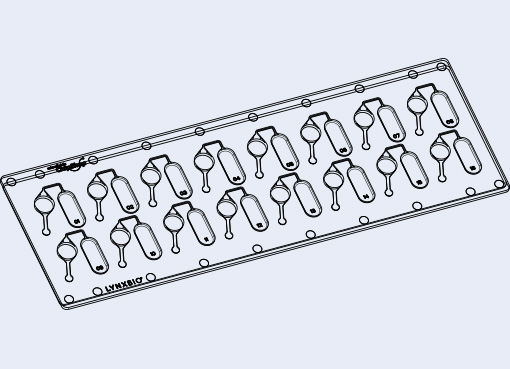
Schematic drawing of Fluidic 1471
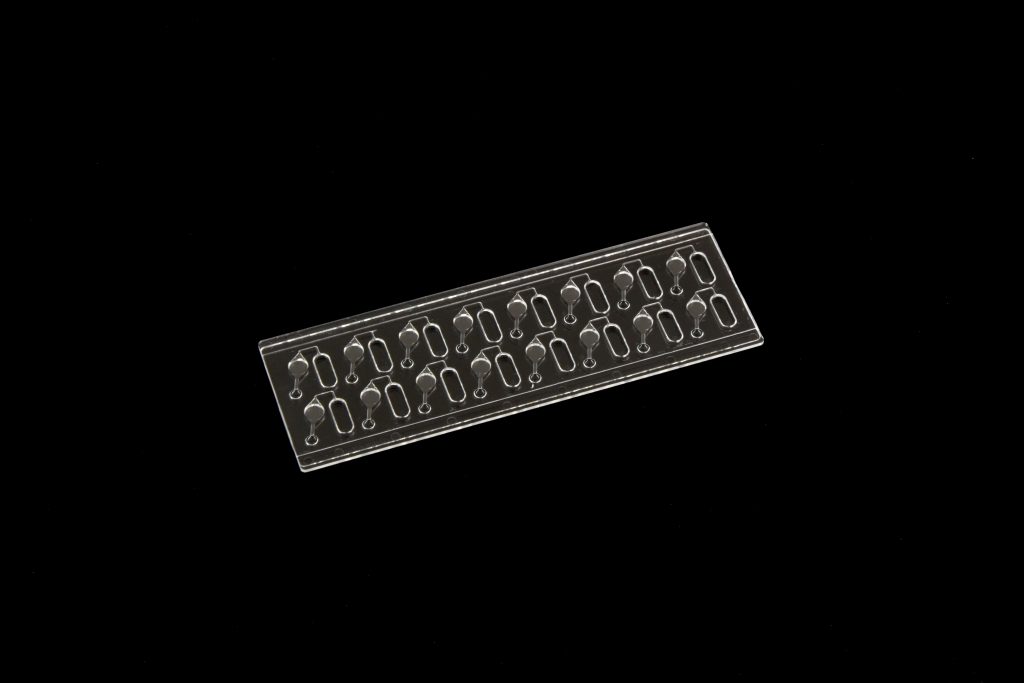
Fluidic 1471
Spheroid chip
The spheroid chip Fluidic 1407 is used for the insertion and separation of pre-cultivated spheroids or for the formation and cultivation of spheroidal cell structures and their imaging on-chip. The goblet-shaped catcher structures are arranged along a meandering, band-like main channel. Each catcher structure is followed by a small passage channel through which a suction effect is generated during fluidic operation. Consequently, spheroids are drawn into the catcher structures.
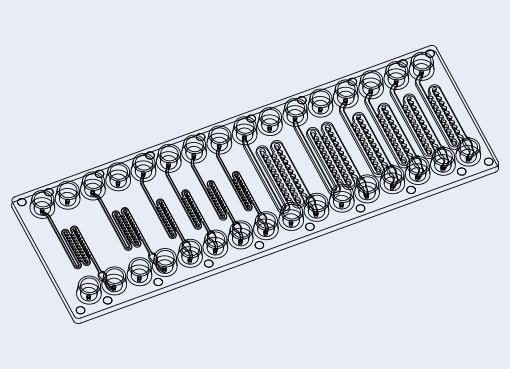
Schematic drawing of Fluidic 1407
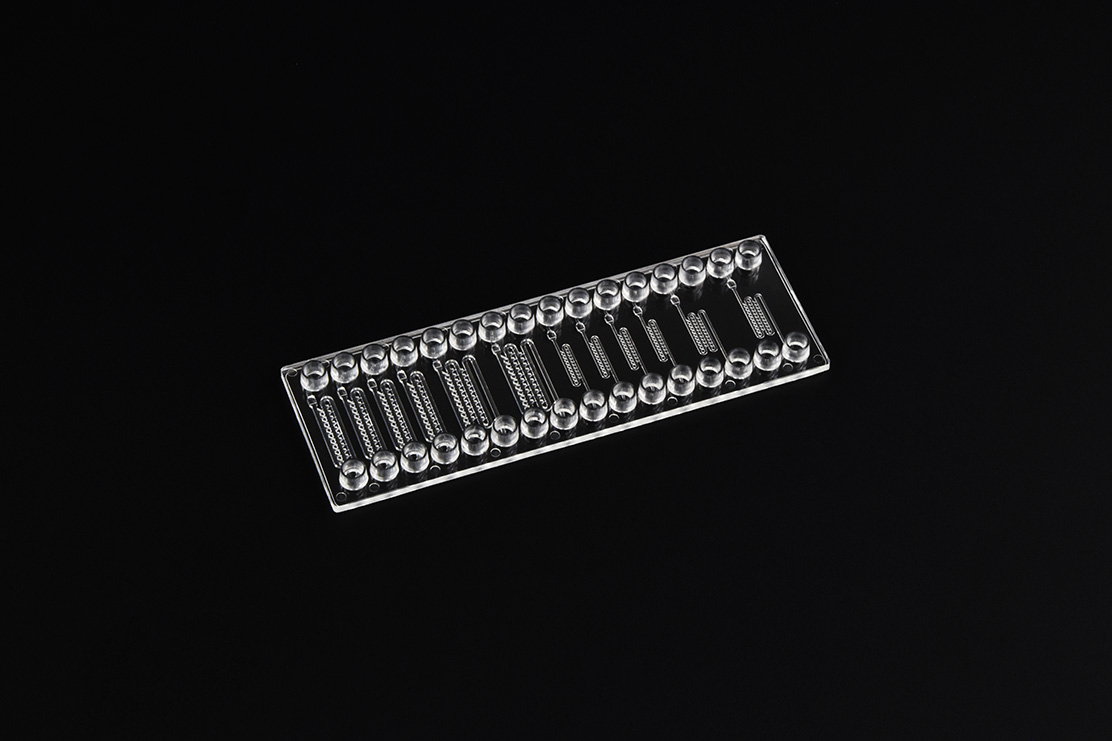
Fluidic 1407
